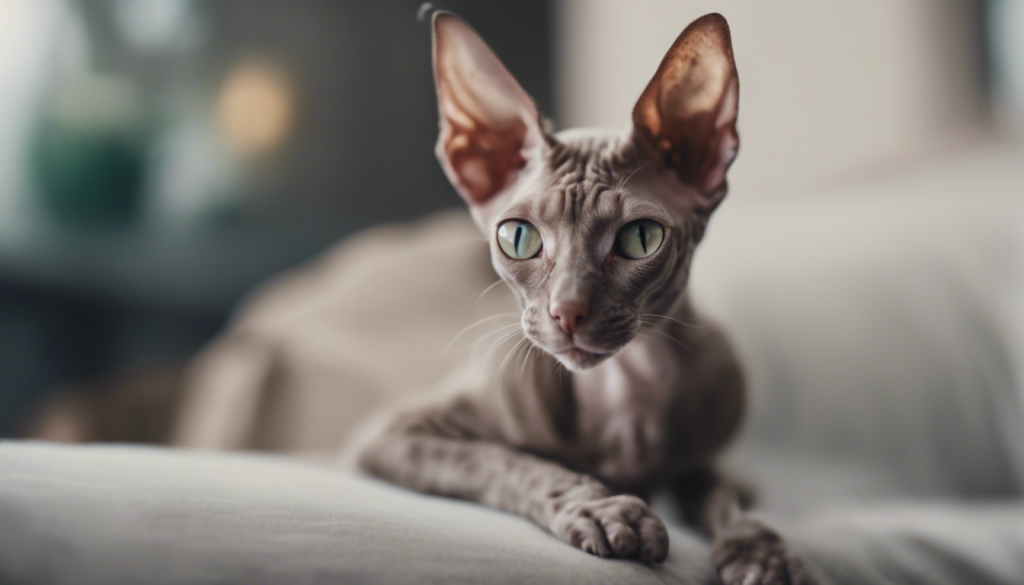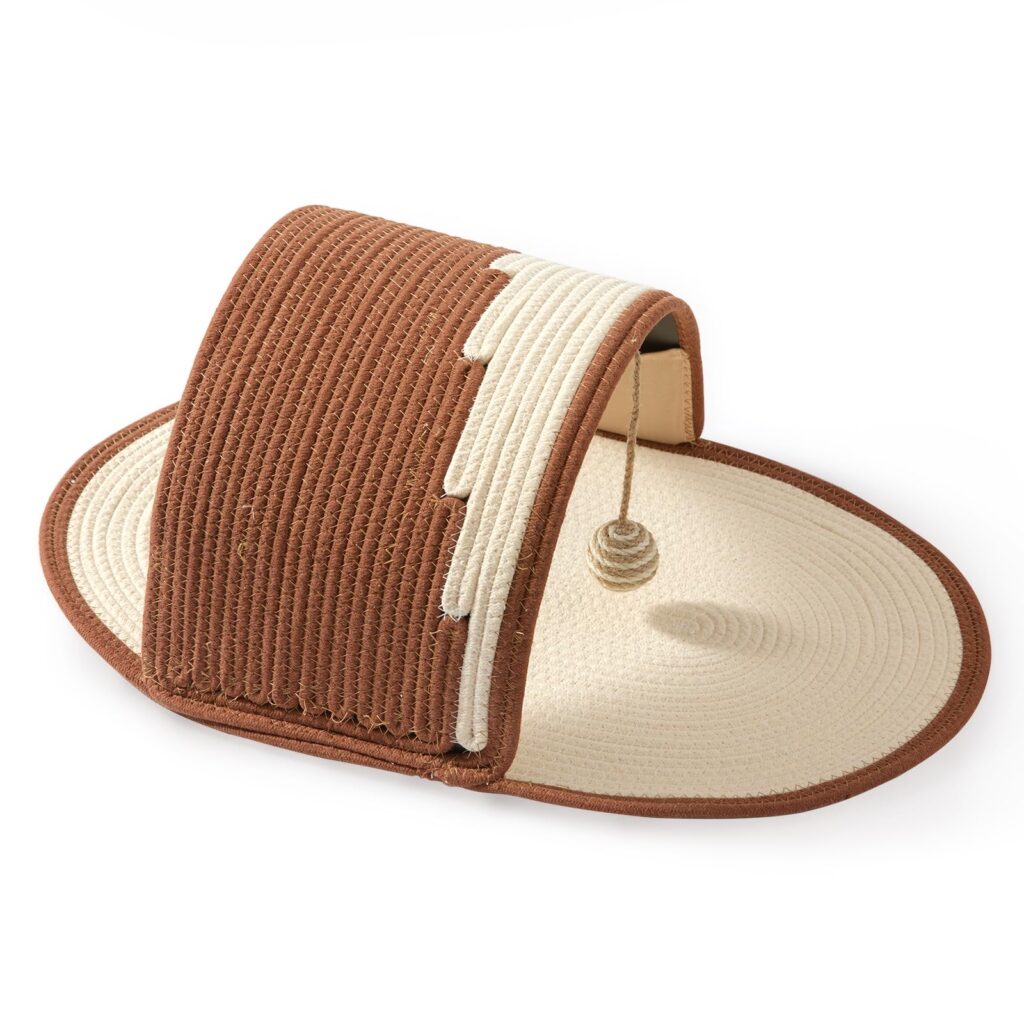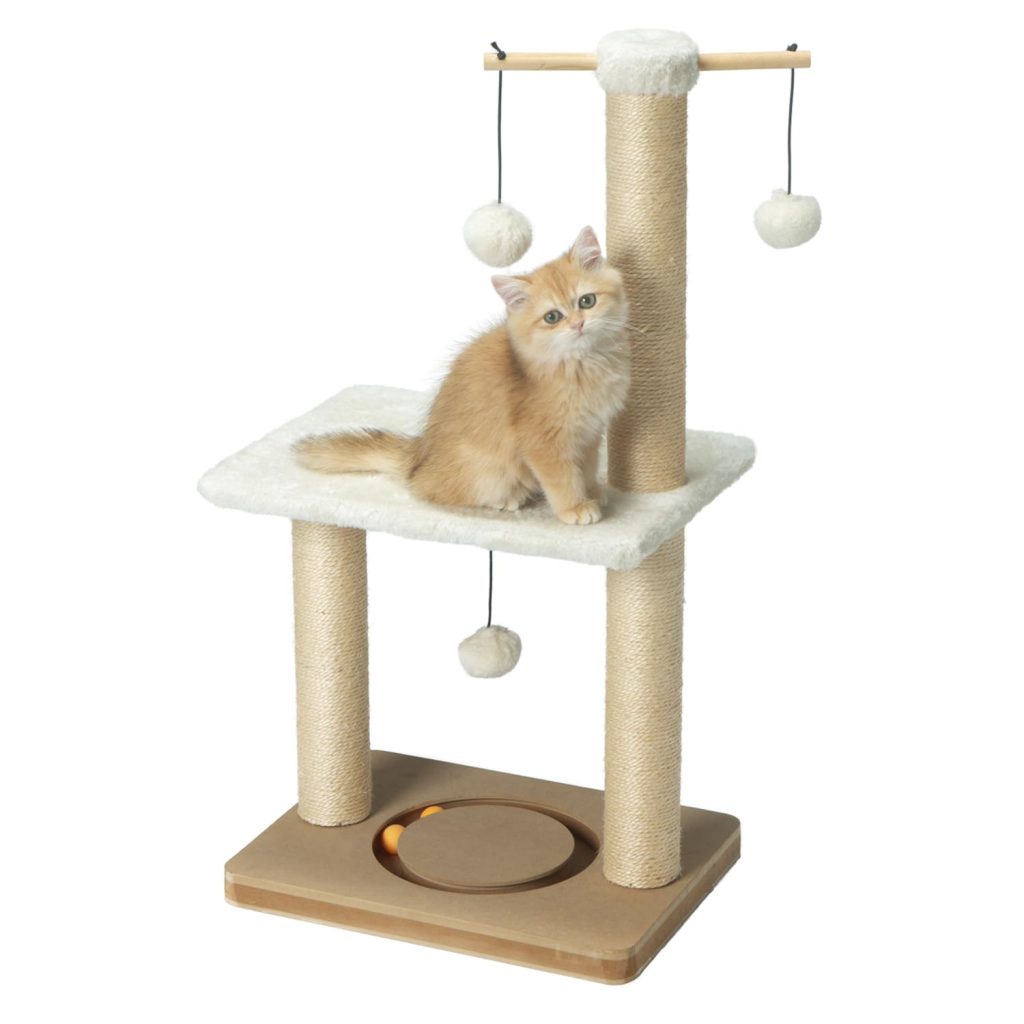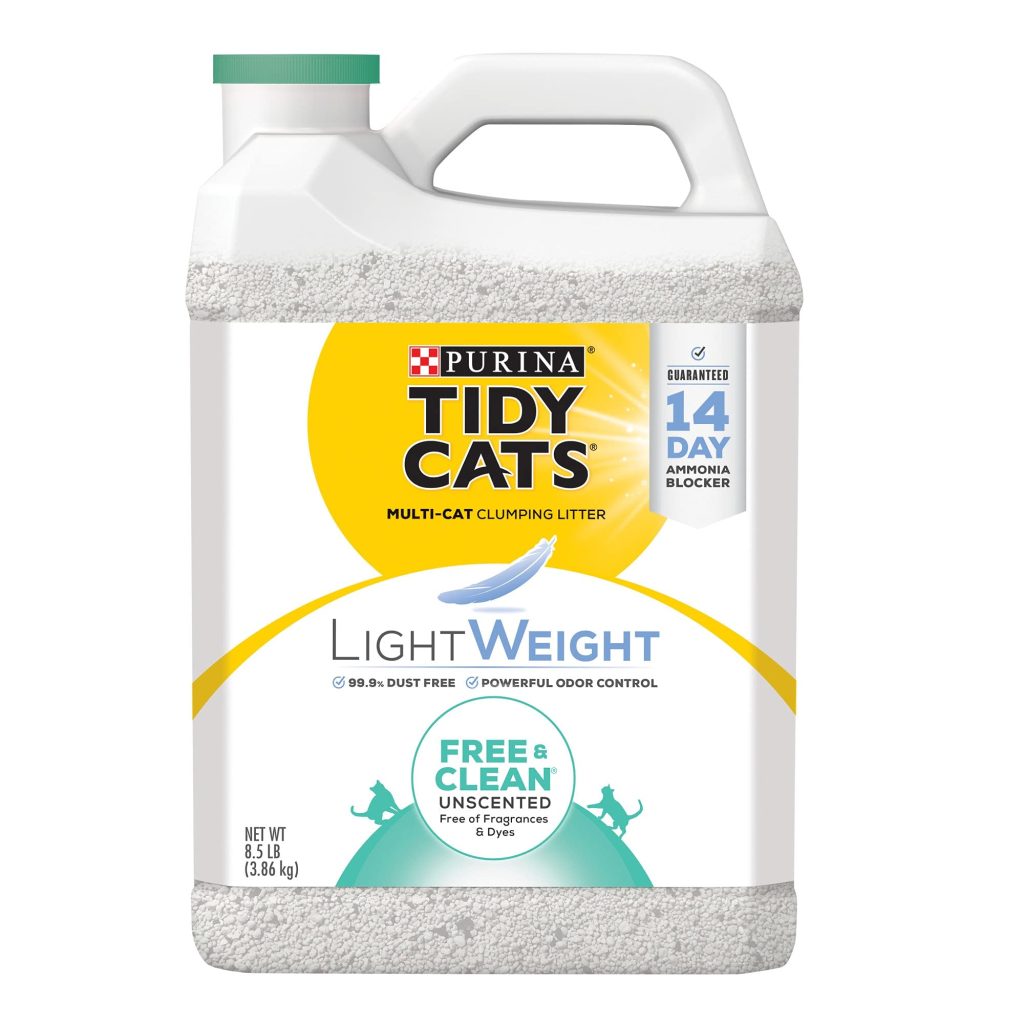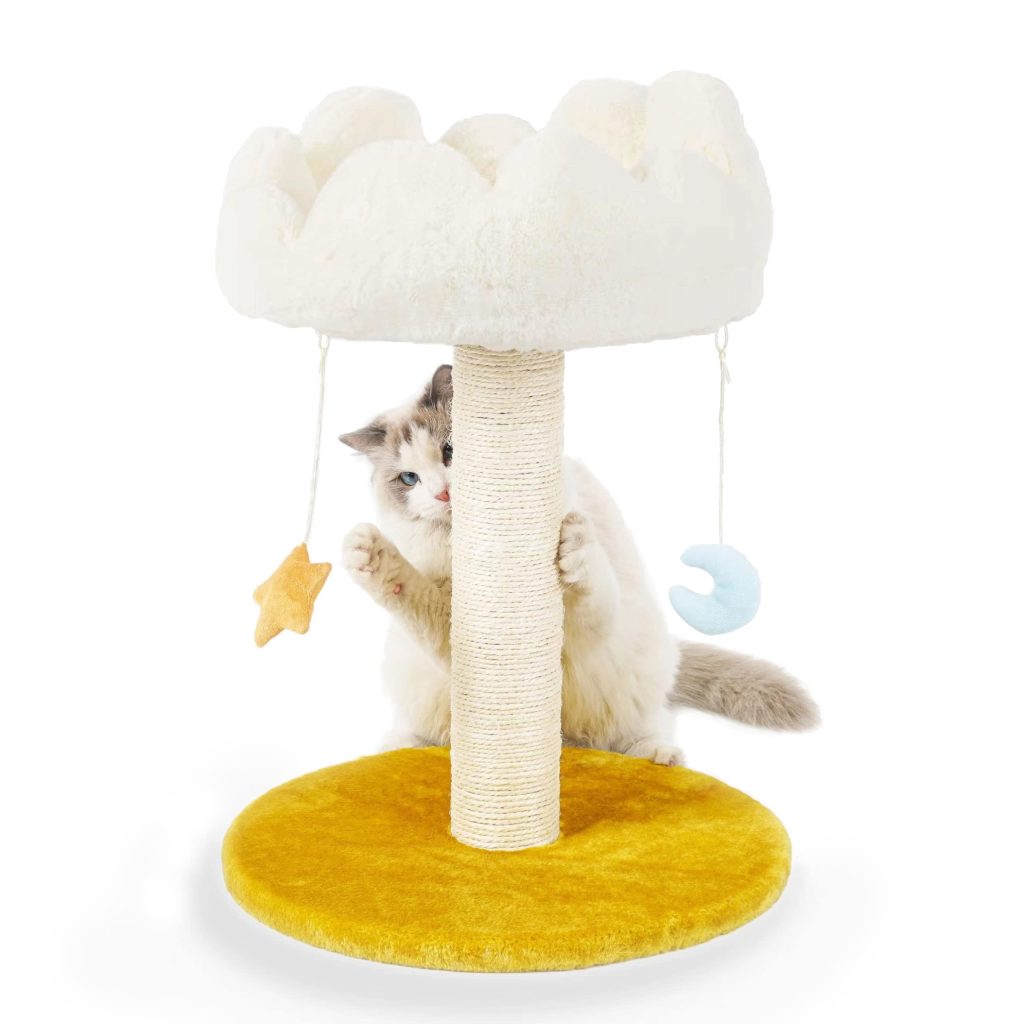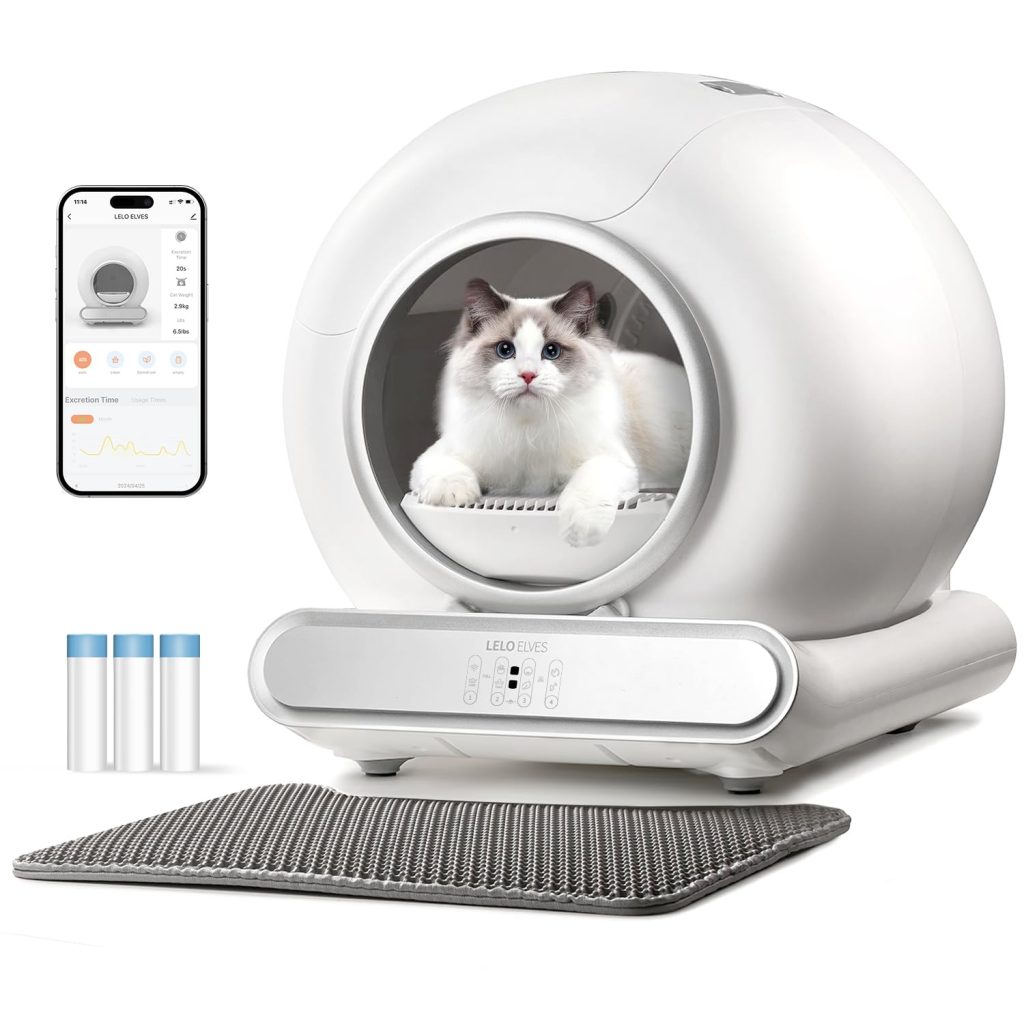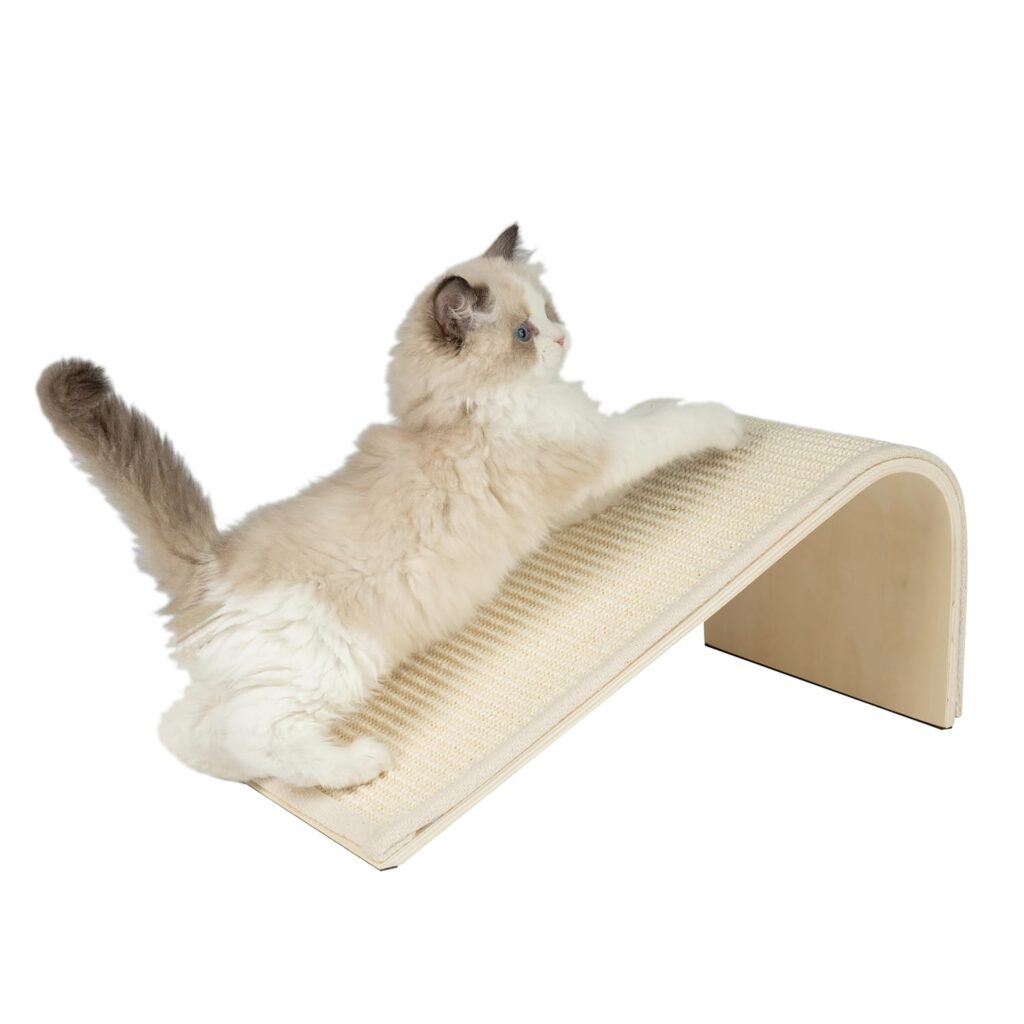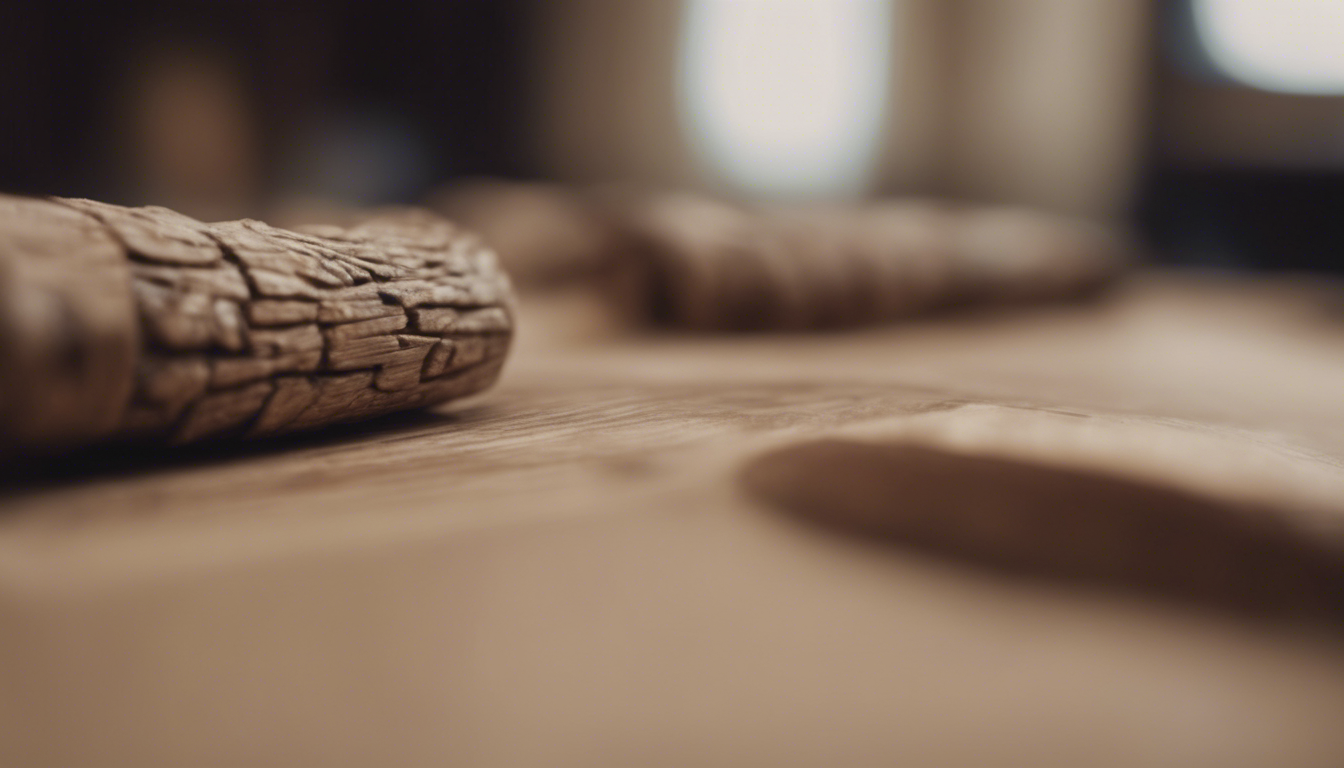
Understanding Feline Clawing Behavior
Cats and their claws – it’s a combo that can cause quite a kerfuffle in your home if not understood and managed correctly. But before you get your own claws out in frustration over another scratched-up piece of furniture, let’s pause to get the full scoop on why your feline friend is so keen on this clawing business.
First things first, clawing isn’t just a hobby or a way to irk you; it is a natural, instinctual behavior that’s important for several reasons. Imagine if you had the urge to stretch every inch of your body after a long day – feels good, right? Well, when cats claw, they’re stretching their paws and legs, getting a lovely full-body workout that would put some yoga poses to shame. It helps keep those kitty muscles toned and ready for all sorts of cat adventures.
Not just that, but clawing is kind of like a manicure for cats – but way less about the pretty polish and more about health. Cats’ claws are continuously growing, and scratching helps shed the outer nail layers, keeping their claws sharp and clean. Plus, it is all about territory, folks! When cats scratch, they’re leaving their scent via glands on their paws, communicating to other whiskered wanderers that this spot is taken. It’s like leaving a sticky note saying, ‘Hey, I’ve been here!’
And let’s dive a little deeper into the emotional aspect. Scratching can be a stress-reliever for your cat. On a rough day, your kitty might head straight for the scratch post (ideally) to work off some tension. It is their way of letting out built-up energy or emotion – kinda like hitting the gym after a day jam-packed with meetings.
So there you have it, understanding your cat’s clawing is a mix of being a fitness fanatic, a bit of a neat-freak, rocking some scent-based graffiti, and needing an emotional outlet. A complex creature? Absolutely. But with this insight, you are on the path to helping channel their scratching saga into a happy tale for both your cat and your furniture.
Types of Scratch Posts and Their Benefits
Now that we’ve wrapped our heads around the ‘whys’ of kitty clawing, let’s explore the dandy little solutions known as scratch posts. A scratch post isn’t just a fancy piece of cat furniture; it is an essential part of a happy cat’s life. There are various types of scratch posts, each with its unique set of perks to keep your feline friend engaged and entertained.
For starters, we’ve got the classic upright post, standing tall like a tree in the living room. It’s perfect for those stretch-and-scratch sessions and most mimic the natural scratching preference for cats. Some come wrapped in sisal rope – durable and rough, it’s ideal for shredding those outer claw layers and provides a satisfying texture for your furry pal.
On the flip side, we have the horizontal scratch boards or mats. These are the go-to for cats that prefer to stretch horizontally and are great space-savers. They can easily slide under sofas or beds when not in use. Some might even come sprinkled with a dash of catnip, making them irresistible to curious kitties.
And let’s not forget the wall-mounted scratchers for those space-conscious folks. They clear the floor space while still offering prime real estate for your cat’s scratching needs. Plus, they’re excellent for homes with multiple cats, providing more scratching spots without cluttering the living space.
Moving on to the more interactive arena, there are posts with built-in toys, making each scratch a playful adventure. These usually have dangly balls or feathers attached at the top, encouraging pawing and swatting after a good claw workout. It’s a combination of exercise and fun that keeps your cat coming back for more.
Amidst these varieties, you’ve got your eco-friendly materials like recycled cardboard which are not only good for Mother Earth but also surprisingly engaging for cats. They love the feel of cardboard under their paws, and these can be found in creative shapes and designs.
What’s not to love? Each type of scratch post adds a twist to your cat’s day-to-day grind, helping to keep their claws in tip-top shape and preventing them from appointing your sofa as the next best option. Not only do these posts save your home décor, but they also encourage positive play and offer a dedicated spot for your cat to mark their scent – important in a multi-cat household. By incorporating these into your home, you’re amplifying the fun for your cat while nurturing an understanding relationship between you both.
Placement and Training: Encouraging Use of Scratch Posts
Great, so now you’ve got your scratch post, and you’re ready to roll out the red carpet for your cat to begin their scratching spree. But where do you put this new pièce de résistance in your home? Placement is key! Ponder like a cat – they’re not going to trek across the entire house just to scratch. Keep it central, in an area where your cat likes to hang out. Near their favorite nap spot or by the window where they watch the world go by can be great choices.
How about making it a focal point? Some might say, ‘But my décor!’ However, if it’s tucked away in a corner, your furball might not be tempted to use it. You want your kitty to think ‘this is the spot!’ every time the urge to scratch kicks in.
Now, let’s talk training, because yes, even independent cats can learn a few tricks, especially when it’s in their best interest. If your kitty’s still eyeing the couch, don’t despair. When they make a beeline for the forbidden furniture, gently lift them and place them by the scratch post. You can demonstrate by running your own nails down the surface – just watch those fingers!
A little encouragement can go a long way – and here’s where catnip comes into play. Rub a bit of it on the new scratch post. Or use a spray version if you are not keen on the mess. For many cats, catnip is like a magnet. They simply can’t resist its appeal, and before you know it, they’ll be associating their new scratching haven with all those good, happy feels.
Reward good behavior! When you catch your cat using the post instead of the armrest of your sofa, it’s praise time. A kind pet or a favorite treat can work wonders in reinforcing the good habit. Remember, cats are smart – they’ll soon realize that scratching the post gets them goodies and love.
If you have more than one furry overlord ruling your roost, think multiple scratchers. Cats can get possessive about their scratching spots, and you want to avoid any tension in kitty paradise. Providing several outlets for scratching helps keep the peace – think cat politics but less talk and more…well, scratching.
And just when you ponder you’ve got it all set up, pay attention to your cat’s preferences – some cats might initially ignore the posts altogether. Don’t give up! Rotate them around different spots in your home or try different types until you find the winner.
Incorporating these strategies might take a bit of trial and error, but with patience and observation, you’ll find the sweet spot that keeps your kitty happy and your furniture intact. It is about crafting an environment that caters to your cat’s instincts while molding their habits to fit into your shared home life. Before long, your cat will be hitting their scratch post without a second thought, and your bond will be all the stronger for it.
Maintaining and Replacing Scratch Posts Over Time
Alright, let’s get down to the nitty-gritty of maintaining those beloved scratch posts. Your cat’s scratcher isn’t just another piece of furniture – it is a vital part of their daily routine. So keeping it in good shape? That’s essential for continued feline happiness and your peace of mind. Just like you wouldn’t appreciate a run-down gym, your kitty won’t be thrilled with a tattered post that’s lost its appeal.
Think about it; your cat’s been tearing up their favorite scratching spot – it’s bound to look like it’s gone through a few cat-astrophes over time. Regularly give the scratch post a once-over to brush off any loose bits and straighten out fibers that may have gone astray. This little TLC can make an old post feel more inviting. And hey, why not sprinkle a fresh pinch of catnip on there while you are at it? Keep things exciting!
If your cat’s scratching post looks like it is survived a claw-apocalypse, it might be time to bid farewell and welcome a new one into your home. Cats can be finicky creatures of habit, but they are also keen on fresh, crisp scratching surfaces. A new post means reinvigorated interest and renewed scratching fervor.
Swapping out worn scratchers for new ones doesn’t mean you have to toss the old one immediately. Try this: place the new post nearby the old, battered one. Chances are your kitty will be curious enough to investigate and eventually transition over to the new scratching haven. It’s all about smooth moves with cats – sudden changes can sometimes cause whisker-quivering anxiety.
Don’t be afraid to get creative with it, too! Play around with different textures and materials when choosing a replacement – you never know what might tickle your cat’s fancy. Perhaps swapping from a sisal post to a cardboard one could be like hitting the refresh button, sparking new interest and keeping those paws busy in all the best ways.
And remember, while we’re all about embracing change, consistency is still key for our furry friends. Stick to similar types of scratchers that your cat has shown a love for in the past. If vertical posts are their jam, keep it upright. If horizontal lounging and scratching is their style, well, you’ve got your answer there.
Consistently maintaining and occasionally replacing scratch posts isn’t just about keeping up appearances or indulging your cat’s latest whims. It is about respecting their natural behaviors, providing for their needs, and strengthening the mutual respect and affection that makes your house truly feel like a shared home. Plus, let’s not forget – it keeps those claws far away from your precious furniture. So go on – keep that scratch post game strong!
